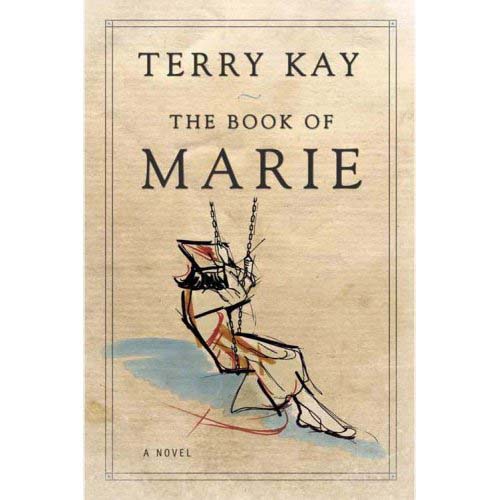Terry Kay was a prolific and award-winning author whose work included fiction, nonfiction, screenplays, and children’s books. His most celebrated novel, To Dance with the White Dog, was made into a television movie by the Hallmark Hall of Fame and became a best-seller in Japan.
Terry Winter Kay was born February 10, 1938, in Hart County, the eleventh of twelve children of T. H. Kay, a farmer and nurseryman, and Viola Winn Kay. He grew up on a farm, played football for Royston High School, and earned his B.A. degree in social science from LaGrange College in 1959. In August of that year, he married Tommie Duncan. They had four children.
Early Life and Breakthrough Novel
In 1959, after a brief, unsuccessful career as an insurance salesman, Kay began working as a copy boy and then a reporter for the Decatur-DeKalb News. From 1962 to 1973 he worked as a sportswriter and a film and theater critic for the Atlanta Journal. Kay left the newspaper for the corporate world, working as creative director and account executive for various advertising firms between 1973 and 1977. At the Oglethorpe Power Corporation in Chamblee, where he worked from 1977 until he left in 1989 to devote his full time to writing, Kay rose to the level of senior vice president.
Kay’s first novel, The Year the Lights Came On (1976), began as a magazine piece that his friend Pat Conroy encouraged him to turn into a novel. The novel draws on Kay’s boyhood in Royston. A nostalgic coming-of-age story set in the 1940s, the novel describes the effects of rural electrification on two rival gangs in the fictional county of Eden, Georgia.
Kay set his second novel, After Eli (1981), in a remote Appalachian village in the Great Smoky Mountains during the late 1930s. Michael O’Rear, an itinerant and charismatic Irishman, attempts to win the hearts of Rachel Pettit, her daughter, and her sister, in order to find a legendary fortune left by Eli Pettit. A drama of unfolding terror and psychological horror, the novel is a disturbing ghost story, for which Kay received the Georgia Author of the Year Award from the Georgia Writers Association. Dark Thirty (1984), set also in the hills of north Georgia, continues the theme of violence.
In 1990 Kay published his breakthrough novel, To Dance with the White Dog. The work made him internationally famous. The Hallmark Hall of Fame 1993 dramatization of the novel, filmed in Americus and Plains, won an Emmy. The novel began as a nonfiction work to celebrate Kay’s parents’ long marriage and to recount how his father, who died of cancer in 1980, was visited by a white dog after his wife’s death in 1973. The eighty-one-year-old protagonist, Sam Peek, has just lost his wife, Cora, after fifty-seven years of marriage. A phantom-like white dog appears soon afterward, and Sam is convinced that it is the soul of Cora. The dog accompanies Sam on a journey, literally and symbolically, to his high school reunion in Madison. This touching novel explores universal themes of love, loss, and coming to terms with mortality.
Video by Darby Carl Sanders, New Georgia Encyclopedia
Kay followed this best-seller with Shadow Song (1994), drawn from three summers spent working in the Catskill Mountains in New York to save money for college. Shadow Song, like Kay’s first novel, began as a magazine piece, and once again Pat Conroy urged him to turn the story into a longer work. In 1997 Kay published The Runaway, a novel set in the small town of Crossover, Georgia, shortly after World War II (1941-45). Son Jesus and Tom, both twelve years old, lead a kind of Tom Sawyer and Huck Finn life of adventure until they discover human bones in an old sawmill.
Later Works
The plot of The Kidnapping of Aaron Greene (1999) was conceived by Kay more than twenty-five years before its publication, when he worked for the Atlanta Journal. Aaron Greene is kidnapped on his way to his job as a mail clerk at an Atlanta bank. The kidnappers ask for $10 million, not from his family but from the bank. The manager, seeing Aaron as a “nobody,” refuses to pay the ransom, and Aaron is left frightened and alone, waiting for the life-or-death outcome.
Kay’s novel Taking Lottie Home (2000) is set in northeast Georgia and is the story of a woman named Lottie Barton, “something of an amateur prostitute,” who, leaving her shanty home in Augusta, meets two failed minor league ballplayers on a train. Despite her trials and failures, Lottie “never loses her innocence.”
The Valley of Light (2003) is Kay’s ninth novel. The story concerns a young fisherman in the north Georgia mountains and has some similarities with To Dance with the White Dog. Kay said, “Both have very strong metaphors—the white dog and the fish. The Valley of Light is about someone who has some incapacities, but who has a great gift in other ways.” In 2004 the novel won the Townsend Prize for Fiction, as well as the Georgia Author of the Year Award.

Set in 2004 The Book of Marie (2007) explores race relations during the 1960s in the fictional town of Overton, Georgia, through the recollections of Cole Bishop, a white scholar living in Vermont. Cole, at sixty-eight, writes a memoir of his high school relationship with a white girl named Marie, who moved to Overton in their senior year and did not accept as natural the town’s segregation. The events of that year and their subsequent lifelong correspondence haunts Cole’s personal life and shapes his understanding of the tumultuous civil rights era in Georgia. In his author’s note, Kay writes that the novel grows out of, but is not a sequel to, The Runaway and describes the work as “a love story. . . . The theme of social change is still present, but more as background than as issue.” The Book of Marie garnered Kay a Georgia Author of the Year Award in 2008.
In 2011 Kay published the novel Bogmeadow’s Wish and the short story collection The Greats of Cuttercane: The Southern Stories, for which he received another Georgia Author of the Year Award. They were followed by the novel Song of the Vagabond Bird (2014), which follows five men at a group therapy retreat in South Carolina. Kay’s final novel, The Forever Wish of Middy Sweet (2020), returns to Georgia with a love story about high school sweethearts that reunite in their seventies.
In addition to his fiction, Kay also wrote two children’s books, To Whom the Angels Spoke: A Story of the Christmas (1991) and The Seventh Mirror (2013), as well as a collection of columns and essays, Special K: The Wisdom of Terry Kay (2000).
Awards
Kay received the Southeastern Library Association Outstanding Author of the Year Award in 1991 for To Dance with the White Dog, which was twice nominated for the American Booksellers Association’s Book of the Year. Kay also won an Emmy in 1990 for his original teleplay Run Down the Rabbit.
In 1999 LaGrange College awarded him an Honorary Doctor of Humane Letters, and in 2006 he was inducted into the Georgia Writers Hall of Fame. The following year Kay received the Stanley W. Lindberg Award, sponsored by the Georgia Center for the Book and named for Stanley Lindberg, former editor of the Georgia Review. In 2009 he received a Governor’s Award in the Humanities, and in 2011 he received the Lifetime Achievement Award from the Georgia Writers Association. The Atlanta Writers Club also named its annual fiction award, the Terry Kay Prize for Fiction, in his honor.
Terry Kay died on December 12, 2020, of liver cancer. He was eighty-two.





